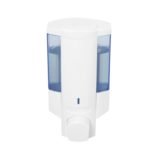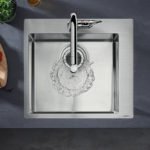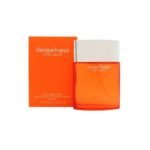Knowing what’s typical for your breasts is the first step toward better breast health (breast awareness). Consider performing regular breast self-exams to promote breast health. You’ll learn how your breasts’ sensitivity and texture change during your menstrual cycle with practice. Breast lumps, breast discomfort, and nipple discharge are common concerns for many women. Understand what is normal and when to seek medical advice. Clinical breast exams, mammography, and breast ultrasounds are just a few examples of typical screening and diagnostic testing for breast health. Understand the surgical process, including who is a candidate for surgery, what to expect from the procedure, and potential risks, whether you’re considering breast augmentation or breast reduction.
Why is it necessary to take care of my breasts when you are breastfeeding?
While breastfeeding, your breasts will go through typical modifications. While breastfeeding, you may experience issues with your breasts and nipples. Learn about the differences between normal and abnormal alterations. Breast care can aid in the prevention and management of issues, allowing you and your baby to reap the benefits of breastfeeding. It is critical to take care of your breasts in order to avoid diseases and indications of aging. Every woman, no matter how young or old, needs to take care of her breasts.
Cleaning Instructions
Despite the notion that it is natural, breastfeeding is a taught skill for both the mother and the baby. Be patient and ready to put in some practice time. A breastfeeding class will teach you the fundamentals and point you in the right direction to avoid many frequent mistakes. After the first two or three weeks, breastfeeding will become simpler.
Patterns of Breastfeeding
For the first few weeks, your baby will appear to be continuously nursing. In a baby’s stomach, breast milk is quickly digested. The baby should be breastfed at least 8-12 times every 24 hours throughout the first few weeks. A baby must be fed frequently in order to acquire weight and for your body to produce enough milk. As soon as your infant exhibits signs of hunger, feed him or her. Do not wait till the baby cries before taking action. Crying might be a late symptom of hunger, making latching on more challenging.
Know-How Exercise can Help
Exercising will not make your breasts grow larger. Exercise, on the other hand, can help contour your breasts and enhance circulation. Your breasts will stiffen up if you do fifteen minutes of push-ups every day. Dumbbells assist in the development of chest muscles, which in turn assists in the strengthening of the breasts. Blood circulation is improved by massaging your breasts. You’ll also notice a difference in the skin’s quality. Begin by softly pressing upwards while holding your breasts in your hands. Massage clockwise and then anticlockwise with your fingers. At home, conduct self-examinations. Breast cancer is no longer a problem for women after menopause. A routine exam will alert you before things deteriorate. Go to the doctor if you notice lumps while rubbing yourself. It’s possible that it’s a tumour. You may have an infection if your breasts or nipples are really sore.
Breastfeeding mothers’ personal hygiene
Following your baby’s birth, it’s critical to take care of your personal hygiene needs. Hand washing frequently will assist to keep germs from spreading between you and your baby. Breastfeeding needs less effort in terms of hygiene than bottle feeding. This is because there is no need to clean bottles or sterilize things before preparing feeds. Your milk also includes anti-infection qualities, which help to keep your baby healthy. However, appropriate hygiene is still essential. Before breastfeeding your baby, make sure you cleanse your hands. Your breasts do not need to be washed. You can clean your nipples with water instead of soap in the shower.
Tips for reducing pain and preventing infection when breastfeeding
- After breastfeeding, dab a small bit of breast milk into your nipples and let them air dry.
- Maintain constant cleanliness and dryness of your nipples.
- If you use breast pads, change them frequently or when they get wet, and avoid using breast pads with plastic on the back. Wear clothing that allows air to circulate, such as cotton.
- Consult your pharmacist about breastfeeding-specific creams and compresses. These can help to relieve pain.
Hand scrubbing
Hand washing is one of the most effective ways to prevent sickness from spreading. Colds, flu, and stomach disorders can all be prevented by washing your hands. Even though it appears to be a simple task, hand washing is frequently forgotten or incorrectly performed.
Hands must always be washed:
Before breastfeeding or bottle-feeding, after changing your baby’s diaper, after contact with blood or other bodily fluids (vomit, mucus, saliva), and before picking up your infant you must wash your hands. Before eating. Before, during, and after handling food. Before giving or taking medicine. Before and after changing maternity or sanitary products. Before giving or taking medicine before and after putting in contact lenses. Before and after using the toilet after handling animals or their food, toys, leashes, or waste. After touching anything that might be soiled. More frequently when someone in your home is sick whenever your hands look dirty.
How to properly wash your hands
Remove all of your rings and wash your hands with warm water. To make a lather, use soap and rub your hands together. Wash for at least another 20 seconds. Scrub your fingers, under your nails, the backs of your hands, and wrists. If necessary, wash your hands for a longer period of time to remove all filth visible on your hands. Turn off the taps with a clean towel or your sleeve after thoroughly rinsing your hands under running water. Using a paper towel, hand dryer, or clean towel, fully dry your hands. Hand towels should be replaced on a regular basis. Use alcohol-based hand sanitizers when soap and water aren’t accessible. These are available as gels or wipes. When you’re out and about, they’re a great addition to your changing bag.
Hand sanitizers with alcohol
Unless you have a lot of grime or grease on your hands, alcohol-based hand sanitizers work effectively. Children aged one and up can use alcohol-based hand sanitizers. Assist them in putting it into practice and keep a close eye on them. Allowing youngsters to consume sanitizer is not recommended. Allow them to touch their lips, eyes, or nose only after the alcohol in their hands has dissipated.
Buy Breast Care Awareness Products
Breast Care Awareness Products are offered in a wide range of styles. They make purchasing Breast Care Awareness Products quick, convenient, and reasonable. Their collection of these things was made just to fulfil your needs. Look through the variety of breast care products to discover more. There are websites that provide a variety of information about the things they sell, as well as instructions on how to utilize them. A list of breast care awareness goods has been compiled to help.
Reusable Breast Petals Lift Nipple Cover for Women
Natural, gentle, and relaxing it’s self-adhesive, secure, and difficult to take off. It’s quite easy to put on. It looks well with a strapless dress, a swimsuit, or tights. Weddings, social occasions, and photography call for satin tops, lacy see-through bras, and reusable bras. Make sure your breasts are clean before applying. After removing the film, gently place the stickers on the nipples. Silicone is the preferred material.
Nipple Cover with Transparent Breast Tape
These Covers contain a skin-friendly adhesive and a nice skin-coloured cloth on top. Wash and dry your body to ensure that the petal’s adhering surface is clean. Remove the backing from the breast petal and apply the glue if the petals are reusable. Lightly push the cover against the breast until it adheres. Gently peel the petal away from the breast to remove it. Rubbing alcohol or baby oil can be used to remove any leftover adhesive. It should not be used on broken, injured, or sunburned skin. Take a hot shower or soak in the tub if you’re having problems taking it off.
Push Up Pads for the Breasts
Plastic surgery is not required. This bra insert helps minimize bounce and provides optimal support and comfort during hard activity. Each pack comes with one pair. These loom-style bras are available in a number of sizes and colours, and they give you a smooth look under your garments. It can help avoid cleavage beneath the arms and bra bulges. Machine washable and easy to clean. Put these bra inserts in your bra or bikini top and you’re done. Wear it a little to the side or under the breast for lift and cleavage. Breasts that are drooping or dangling should be removed. Get yours as soon as possible.
Take Care of Yourself
Taking care of your breasts while breastfeeding will help you stay healthy and avoid breast concerns that can cause problems with breastfeeding. Contact your doctor, a lactation consultant, or a local breastfeeding support group if you have any questions regarding your breasts or how to care for them.













